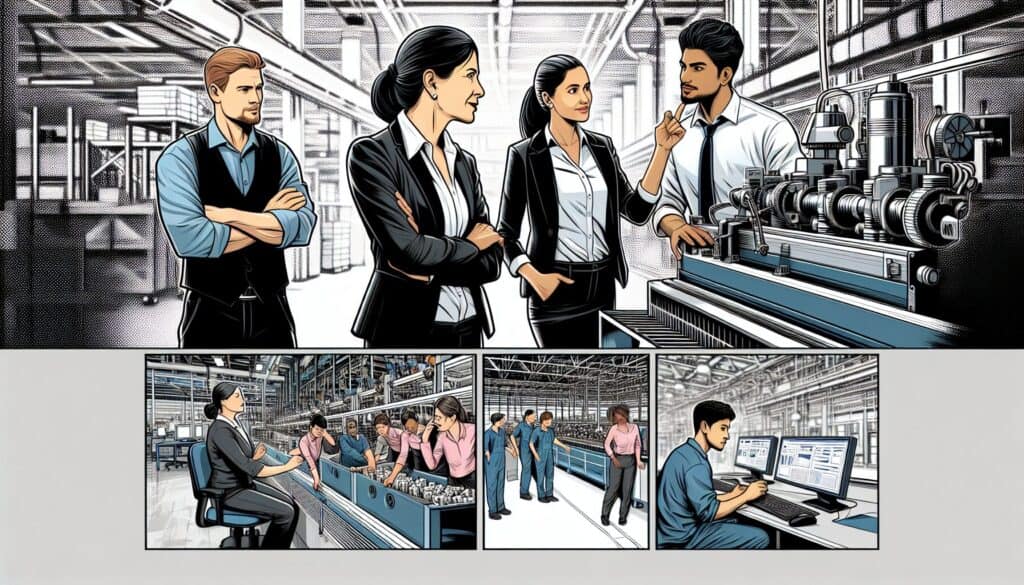A Lean management practice where managers and leaders go to the “gemba” (the actual place where work is done, e.g., the factory floor, the office) to observe processes, 从事 with employees, understand current conditions, and identify opportunities for improvement.
- 方法: 构思, 解决问题
Gemba Walks

Gemba Walks
- 敏捷方法论, 持续改进, Gemba, 改善, 精益制造, 流程改进, 流程制图, 价值流映射, 消除废物策略
目标
如何使用
- Involves physically going to the workspace, observing the work being performed, asking questions to understand the process and any challenges (focusing on "what" and "why," not "who"), and showing respect to the people doing the work. The goal is to see reality, not to immediately solve or blame.
优点
- Provides firsthand understanding of processes and challenges; Fosters better communication and engagement with employees; Helps identify waste and improvement opportunities that might not be visible from a distance; Promotes a culture of respect and continuous improvement.
缺点
- Can be ineffective if not done with the right purpose (observation and understanding, not immediate judgment or problem-solving); May make employees uncomfortable if they feel scrutinized; Requires time commitment from leadership.
类别
- 精益西格玛, 制造业, 解决问题, 项目管理, 质量
最适合:
- Gaining direct insights into how work is actually performed, engaging with front-line staff, and identifying improvement opportunities by observing processes in their real context.
Gemba Walks find strong applications across various industries such as manufacturing, healthcare, software development, and service sectors, where iterative improvement and efficiency are desired. This methodology is typically employed during project phases focused on process mapping, quality assurance, and continuous improvement initiatives. It ideally involves team leaders, managers, and engineers who actively engage with frontline employees to understand their daily challenges and workflow intricacies. For instance, in a manufacturing setting, a manager might visit the assembly line to observe real-time operations, identify bottlenecks, or discover redundant steps that could be optimized. Similarly, in healthcare, a Gemba Walk may involve healthcare administrators observing nursing practices in a unit, leading to enhanced patient care strategies. This participative approach allows for the capturing of tacit knowledge that is often overlooked, as it places value on the perspectives of those directly involved in the processes. In educational contexts, faculties can adopt this technique to assess classroom dynamics, thereby informing curriculum designs. Promoting a culture of open dialogue through Gemba Walks helps break down silos, building trust between management and frontline workers, which in the long term supports a more collaborative environment for problem-solving and innovation.
该方法的关键步骤
- Go to the Gemba, the actual place where work is done.
- Observe the work processes in action without interfering.
- Ask questions focused on "what" and "why" to understand processes.
- Listen actively and engage with frontline staff to gather their perspectives.
- Take note of any observed challenges or inefficiencies in the process.
- Show respect for workers and acknowledge their contributions.
专业提示
- Utilize open-ended questions during Gemba Walks to encourage employees to share their thoughts and experiences without steering the conversation.
- Take a multi-disciplinary approach by involving team members from various functions to obtain diverse viewpoints on the observed processes.
- Document observations in real-time and categorize them into themes post-visit to facilitate more structured analysis and action planning.
相关文章
肌肉骨骼不适调查表
多变量测试(MVT)
多元回归分析
动作捕捉系统
MoSCoW 方法
情绪中值测试